Electronics
Packaging
Automotive
Healthcare
Textiles
Screen Printing
Inkjet Printing
Flexographic Printing
Direct-to-Shape Printing
Conductive Inks
Dielectric Inks
Substrates
Interactive Materials
Consumer Electronics
Industrial Applications
Medical Devices
Smart Packaging
North America
Europe
South America
Asia Pacific
Middle East and Africa
North America Outlook (USD Billion, 2019-2035)
North America Functional Printing Market by Application Type
Electronics
Packaging
Automotive
Healthcare
Textiles
North America Functional Printing Market by Technology Type
Screen Printing
Inkjet Printing
Flexographic Printing
Direct-to-Shape Printing
North America Functional Printing Market by Material Type
Conductive Inks
Dielectric Inks
Substrates
Interactive Materials
North America Functional Printing Market by End Use Type
Consumer Electronics
Industrial Applications
Medical Devices
Smart Packaging
North America Functional Printing Market by Regional Type
US
Canada
US Outlook (USD Billion, 2019-2035)
US Functional Printing Market by Application Type
Electronics
Packaging
Automotive
Healthcare
Textiles
US Functional Printing Market by Technology Type
Screen Printing
Inkjet Printing
Flexographic Printing
Direct-to-Shape Printing
US Functional Printing Market by Material Type
Conductive Inks
Dielectric Inks
Substrates
Interactive Materials
US Functional Printing Market by End Use Type
Consumer Electronics
Industrial Applications
Medical Devices
Smart Packaging
CANADA Outlook (USD Billion, 2019-2035)
CANADA Functional Printing Market by Application Type
Electronics
Packaging
Automotive
Healthcare
Textiles
CANADA Functional Printing Market by Technology Type
Screen Printing
Inkjet Printing
Flexographic Printing
Direct-to-Shape Printing
CANADA Functional Printing Market by Material Type
Conductive Inks
Dielectric Inks
Substrates
Interactive Materials
CANADA Functional Printing Market by End Use Type
Consumer Electronics
Industrial Applications
Medical Devices
Smart Packaging
Europe Outlook (USD Billion, 2019-2035)
Europe Functional Printing Market by Application Type
Electronics
Packaging
Automotive
Healthcare
Textiles
Europe Functional Printing Market by Technology Type
Screen Printing
Inkjet Printing
Flexographic Printing
Direct-to-Shape Printing
Europe Functional Printing Market by Material Type
Conductive Inks
Dielectric Inks
Substrates
Interactive Materials
Europe Functional Printing Market by End Use Type
Consumer Electronics
Industrial Applications
Medical Devices
Smart Packaging
Europe Functional Printing Market by Regional Type
Germany
UK
France
Russia
Italy
Spain
Rest of Europe
GERMANY Outlook (USD Billion, 2019-2035)
GERMANY Functional Printing Market by Application Type
Electronics
Packaging
Automotive
Healthcare
Textiles
GERMANY Functional Printing Market by Technology Type
Screen Printing
Inkjet Printing
Flexographic Printing
Direct-to-Shape Printing
GERMANY Functional Printing Market by Material Type
Conductive Inks
Dielectric Inks
Substrates
Interactive Materials
GERMANY Functional Printing Market by End Use Type
Consumer Electronics
Industrial Applications
Medical Devices
Smart Packaging
UK Outlook (USD Billion, 2019-2035)
UK Functional Printing Market by Application Type
Electronics
Packaging
Automotive
Healthcare
Textiles
UK Functional Printing Market by Technology Type
Screen Printing
Inkjet Printing
Flexographic Printing
Direct-to-Shape Printing
UK Functional Printing Market by Material Type
Conductive Inks
Dielectric Inks
Substrates
Interactive Materials
UK Functional Printing Market by End Use Type
Consumer Electronics
Industrial Applications
Medical Devices
Smart Packaging
FRANCE Outlook (USD Billion, 2019-2035)
FRANCE Functional Printing Market by Application Type
Electronics
Packaging
Automotive
Healthcare
Textiles
FRANCE Functional Printing Market by Technology Type
Screen Printing
Inkjet Printing
Flexographic Printing
Direct-to-Shape Printing
FRANCE Functional Printing Market by Material Type
Conductive Inks
Dielectric Inks
Substrates
Interactive Materials
FRANCE Functional Printing Market by End Use Type
Consumer Electronics
Industrial Applications
Medical Devices
Smart Packaging
RUSSIA Outlook (USD Billion, 2019-2035)
RUSSIA Functional Printing Market by Application Type
Electronics
Packaging
Automotive
Healthcare
Textiles
RUSSIA Functional Printing Market by Technology Type
Screen Printing
Inkjet Printing
Flexographic Printing
Direct-to-Shape Printing
RUSSIA Functional Printing Market by Material Type
Conductive Inks
Dielectric Inks
Substrates
Interactive Materials
RUSSIA Functional Printing Market by End Use Type
Consumer Electronics
Industrial Applications
Medical Devices
Smart Packaging
ITALY Outlook (USD Billion, 2019-2035)
ITALY Functional Printing Market by Application Type
Electronics
Packaging
Automotive
Healthcare
Textiles
ITALY Functional Printing Market by Technology Type
Screen Printing
Inkjet Printing
Flexographic Printing
Direct-to-Shape Printing
ITALY Functional Printing Market by Material Type
Conductive Inks
Dielectric Inks
Substrates
Interactive Materials
ITALY Functional Printing Market by End Use Type
Consumer Electronics
Industrial Applications
Medical Devices
Smart Packaging
SPAIN Outlook (USD Billion, 2019-2035)
SPAIN Functional Printing Market by Application Type
Electronics
Packaging
Automotive
Healthcare
Textiles
SPAIN Functional Printing Market by Technology Type
Screen Printing
Inkjet Printing
Flexographic Printing
Direct-to-Shape Printing
SPAIN Functional Printing Market by Material Type
Conductive Inks
Dielectric Inks
Substrates
Interactive Materials
SPAIN Functional Printing Market by End Use Type
Consumer Electronics
Industrial Applications
Medical Devices
Smart Packaging
REST OF EUROPE Outlook (USD Billion, 2019-2035)
REST OF EUROPE Functional Printing Market by Application Type
Electronics
Packaging
Automotive
Healthcare
Textiles
REST OF EUROPE Functional Printing Market by Technology Type
Screen Printing
Inkjet Printing
Flexographic Printing
Direct-to-Shape Printing
REST OF EUROPE Functional Printing Market by Material Type
Conductive Inks
Dielectric Inks
Substrates
Interactive Materials
REST OF EUROPE Functional Printing Market by End Use Type
Consumer Electronics
Industrial Applications
Medical Devices
Smart Packaging
APAC Outlook (USD Billion, 2019-2035)
APAC Functional Printing Market by Application Type
Electronics
Packaging
Automotive
Healthcare
Textiles
APAC Functional Printing Market by Technology Type
Screen Printing
Inkjet Printing
Flexographic Printing
Direct-to-Shape Printing
APAC Functional Printing Market by Material Type
Conductive Inks
Dielectric Inks
Substrates
Interactive Materials
APAC Functional Printing Market by End Use Type
Consumer Electronics
Industrial Applications
Medical Devices
Smart Packaging
APAC Functional Printing Market by Regional Type
China
India
Japan
South Korea
Malaysia
Thailand
Indonesia
Rest of APAC
CHINA Outlook (USD Billion, 2019-2035)
CHINA Functional Printing Market by Application Type
Electronics
Packaging
Automotive
Healthcare
Textiles
CHINA Functional Printing Market by Technology Type
Screen Printing
Inkjet Printing
Flexographic Printing
Direct-to-Shape Printing
CHINA Functional Printing Market by Material Type
Conductive Inks
Dielectric Inks
Substrates
Interactive Materials
CHINA Functional Printing Market by End Use Type
Consumer Electronics
Industrial Applications
Medical Devices
Smart Packaging
INDIA Outlook (USD Billion, 2019-2035)
INDIA Functional Printing Market by Application Type
Electronics
Packaging
Automotive
Healthcare
Textiles
INDIA Functional Printing Market by Technology Type
Screen Printing
Inkjet Printing
Flexographic Printing
Direct-to-Shape Printing
INDIA Functional Printing Market by Material Type
Conductive Inks
Dielectric Inks
Substrates
Interactive Materials
INDIA Functional Printing Market by End Use Type
Consumer Electronics
Industrial Applications
Medical Devices
Smart Packaging
JAPAN Outlook (USD Billion, 2019-2035)
JAPAN Functional Printing Market by Application Type
Electronics
Packaging
Automotive
Healthcare
Textiles
JAPAN Functional Printing Market by Technology Type
Screen Printing
Inkjet Printing
Flexographic Printing
Direct-to-Shape Printing
JAPAN Functional Printing Market by Material Type
Conductive Inks
Dielectric Inks
Substrates
Interactive Materials
JAPAN Functional Printing Market by End Use Type
Consumer Electronics
Industrial Applications
Medical Devices
Smart Packaging
SOUTH KOREA Outlook (USD Billion, 2019-2035)
SOUTH KOREA Functional Printing Market by Application Type
Electronics
Packaging
Automotive
Healthcare
Textiles
SOUTH KOREA Functional Printing Market by Technology Type
Screen Printing
Inkjet Printing
Flexographic Printing
Direct-to-Shape Printing
SOUTH KOREA Functional Printing Market by Material Type
Conductive Inks
Dielectric Inks
Substrates
Interactive Materials
SOUTH KOREA Functional Printing Market by End Use Type
Consumer Electronics
Industrial Applications
Medical Devices
Smart Packaging
MALAYSIA Outlook (USD Billion, 2019-2035)
MALAYSIA Functional Printing Market by Application Type
Electronics
Packaging
Automotive
Healthcare
Textiles
MALAYSIA Functional Printing Market by Technology Type
Screen Printing
Inkjet Printing
Flexographic Printing
Direct-to-Shape Printing
MALAYSIA Functional Printing Market by Material Type
Conductive Inks
Dielectric Inks
Substrates
Interactive Materials
MALAYSIA Functional Printing Market by End Use Type
Consumer Electronics
Industrial Applications
Medical Devices
Smart Packaging
THAILAND Outlook (USD Billion, 2019-2035)
THAILAND Functional Printing Market by Application Type
Electronics
Packaging
Automotive
Healthcare
Textiles
THAILAND Functional Printing Market by Technology Type
Screen Printing
Inkjet Printing
Flexographic Printing
Direct-to-Shape Printing
THAILAND Functional Printing Market by Material Type
Conductive Inks
Dielectric Inks
Substrates
Interactive Materials
THAILAND Functional Printing Market by End Use Type
Consumer Electronics
Industrial Applications
Medical Devices
Smart Packaging
INDONESIA Outlook (USD Billion, 2019-2035)
INDONESIA Functional Printing Market by Application Type
Electronics
Packaging
Automotive
Healthcare
Textiles
INDONESIA Functional Printing Market by Technology Type
Screen Printing
Inkjet Printing
Flexographic Printing
Direct-to-Shape Printing
INDONESIA Functional Printing Market by Material Type
Conductive Inks
Dielectric Inks
Substrates
Interactive Materials
INDONESIA Functional Printing Market by End Use Type
Consumer Electronics
Industrial Applications
Medical Devices
Smart Packaging
REST OF APAC Outlook (USD Billion, 2019-2035)
REST OF APAC Functional Printing Market by Application Type
Electronics
Packaging
Automotive
Healthcare
Textiles
REST OF APAC Functional Printing Market by Technology Type
Screen Printing
Inkjet Printing
Flexographic Printing
Direct-to-Shape Printing
REST OF APAC Functional Printing Market by Material Type
Conductive Inks
Dielectric Inks
Substrates
Interactive Materials
REST OF APAC Functional Printing Market by End Use Type
Consumer Electronics
Industrial Applications
Medical Devices
Smart Packaging
South America Outlook (USD Billion, 2019-2035)
South America Functional Printing Market by Application Type
Electronics
Packaging
Automotive
Healthcare
Textiles
South America Functional Printing Market by Technology Type
Screen Printing
Inkjet Printing
Flexographic Printing
Direct-to-Shape Printing
South America Functional Printing Market by Material Type
Conductive Inks
Dielectric Inks
Substrates
Interactive Materials
South America Functional Printing Market by End Use Type
Consumer Electronics
Industrial Applications
Medical Devices
Smart Packaging
South America Functional Printing Market by Regional Type
Brazil
Mexico
Argentina
Rest of South America
BRAZIL Outlook (USD Billion, 2019-2035)
BRAZIL Functional Printing Market by Application Type
Electronics
Packaging
Automotive
Healthcare
Textiles
BRAZIL Functional Printing Market by Technology Type
Screen Printing
Inkjet Printing
Flexographic Printing
Direct-to-Shape Printing
BRAZIL Functional Printing Market by Material Type
Conductive Inks
Dielectric Inks
Substrates
Interactive Materials
BRAZIL Functional Printing Market by End Use Type
Consumer Electronics
Industrial Applications
Medical Devices
Smart Packaging
MEXICO Outlook (USD Billion, 2019-2035)
MEXICO Functional Printing Market by Application Type
Electronics
Packaging
Automotive
Healthcare
Textiles
MEXICO Functional Printing Market by Technology Type
Screen Printing
Inkjet Printing
Flexographic Printing
Direct-to-Shape Printing
MEXICO Functional Printing Market by Material Type
Conductive Inks
Dielectric Inks
Substrates
Interactive Materials
MEXICO Functional Printing Market by End Use Type
Consumer Electronics
Industrial Applications
Medical Devices
Smart Packaging
ARGENTINA Outlook (USD Billion, 2019-2035)
ARGENTINA Functional Printing Market by Application Type
Electronics
Packaging
Automotive
Healthcare
Textiles
ARGENTINA Functional Printing Market by Technology Type
Screen Printing
Inkjet Printing
Flexographic Printing
Direct-to-Shape Printing
ARGENTINA Functional Printing Market by Material Type
Conductive Inks
Dielectric Inks
Substrates
Interactive Materials
ARGENTINA Functional Printing Market by End Use Type
Consumer Electronics
Industrial Applications
Medical Devices
Smart Packaging
REST OF SOUTH AMERICA Outlook (USD Billion, 2019-2035)
REST OF SOUTH AMERICA Functional Printing Market by Application Type
Electronics
Packaging
Automotive
Healthcare
Textiles
REST OF SOUTH AMERICA Functional Printing Market by Technology Type
Screen Printing
Inkjet Printing
Flexographic Printing
Direct-to-Shape Printing
REST OF SOUTH AMERICA Functional Printing Market by Material Type
Conductive Inks
Dielectric Inks
Substrates
Interactive Materials
REST OF SOUTH AMERICA Functional Printing Market by End Use Type
Consumer Electronics
Industrial Applications
Medical Devices
Smart Packaging
MEA Outlook (USD Billion, 2019-2035)
MEA Functional Printing Market by Application Type
Electronics
Packaging
Automotive
Healthcare
Textiles
MEA Functional Printing Market by Technology Type
Screen Printing
Inkjet Printing
Flexographic Printing
Direct-to-Shape Printing
MEA Functional Printing Market by Material Type
Conductive Inks
Dielectric Inks
Substrates
Interactive Materials
MEA Functional Printing Market by End Use Type
Consumer Electronics
Industrial Applications
Medical Devices
Smart Packaging
MEA Functional Printing Market by Regional Type
GCC Countries
South Africa
Rest of MEA
GCC COUNTRIES Outlook (USD Billion, 2019-2035)
GCC COUNTRIES Functional Printing Market by Application Type
Electronics
Packaging
Automotive
Healthcare
Textiles
GCC COUNTRIES Functional Printing Market by Technology Type
Screen Printing
Inkjet Printing
Flexographic Printing
Direct-to-Shape Printing
GCC COUNTRIES Functional Printing Market by Material Type
Conductive Inks
Dielectric Inks
Substrates
Interactive Materials
GCC COUNTRIES Functional Printing Market by End Use Type
Consumer Electronics
Industrial Applications
Medical Devices
Smart Packaging
SOUTH AFRICA Outlook (USD Billion, 2019-2035)
SOUTH AFRICA Functional Printing Market by Application Type
Electronics
Packaging
Automotive
Healthcare
Textiles
SOUTH AFRICA Functional Printing Market by Technology Type
Screen Printing
Inkjet Printing
Flexographic Printing
Direct-to-Shape Printing
SOUTH AFRICA Functional Printing Market by Material Type
Conductive Inks
Dielectric Inks
Substrates
Interactive Materials
SOUTH AFRICA Functional Printing Market by End Use Type
Consumer Electronics
Industrial Applications
Medical Devices
Smart Packaging
REST OF MEA Outlook (USD Billion, 2019-2035)
REST OF MEA Functional Printing Market by Application Type
Electronics
Packaging
Automotive
Healthcare
Textiles
REST OF MEA Functional Printing Market by Technology Type
Screen Printing
Inkjet Printing
Flexographic Printing
Direct-to-Shape Printing
REST OF MEA Functional Printing Market by Material Type
Conductive Inks
Dielectric Inks
Substrates
Interactive Materials
REST OF MEA Functional Printing Market by End Use Type
Consumer Electronics
Industrial Applications
Medical Devices
Smart Packaging
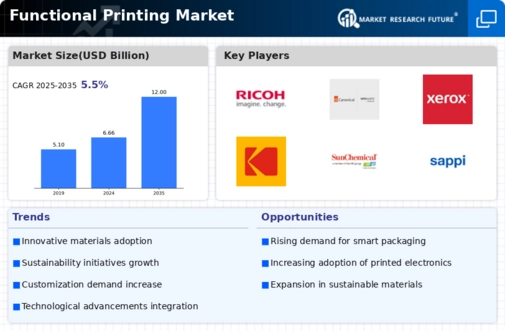
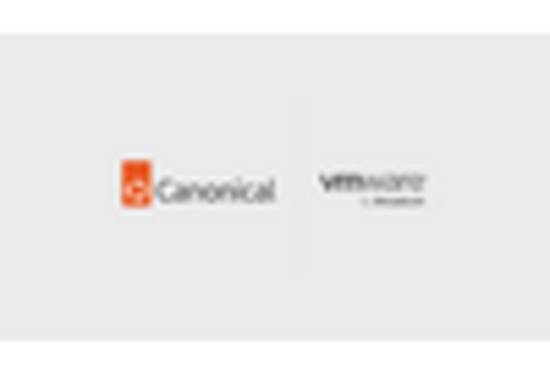
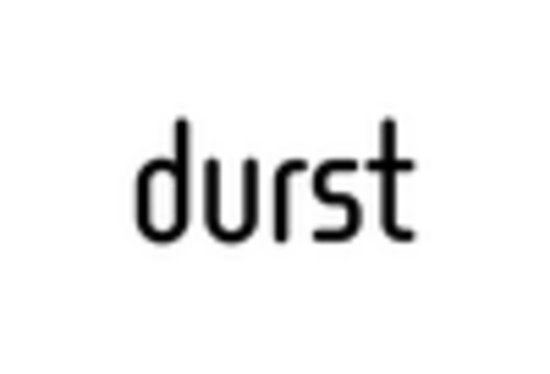
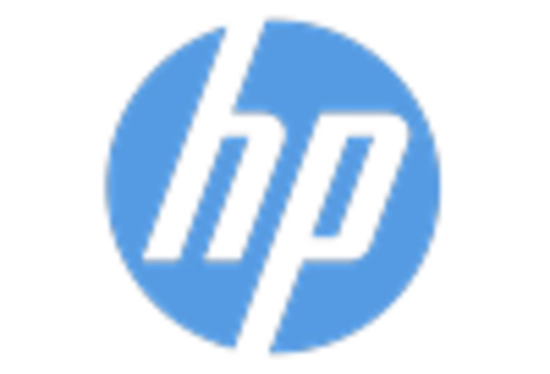
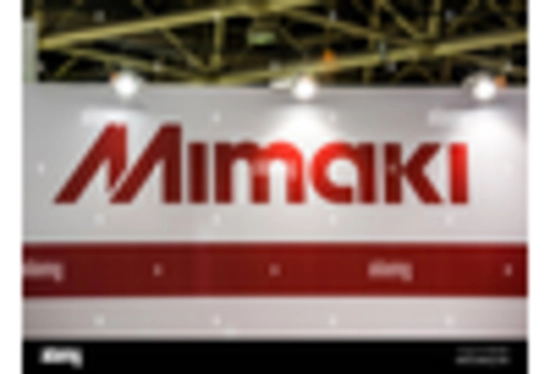
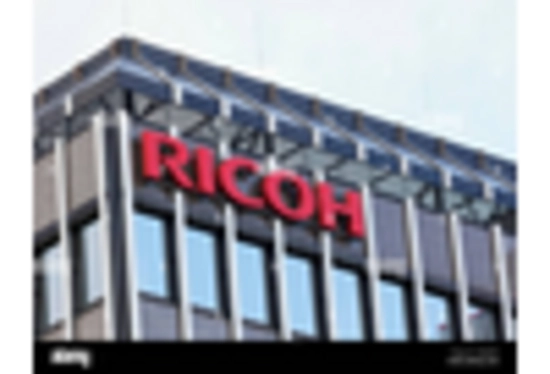
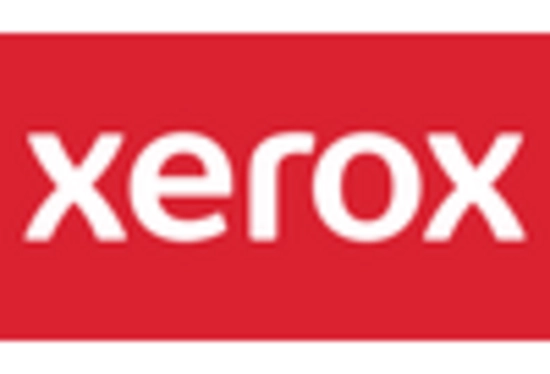

Leave a Comment